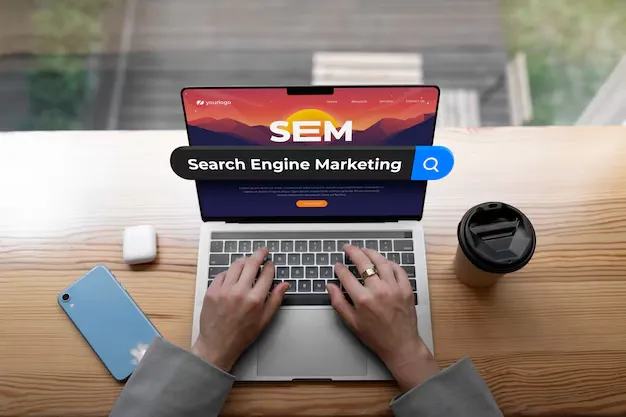In today’s competitive e-learning landscape, simply having an LMS (Learning Management System) website isn’t enough. To truly thrive, your platform must be visible to those searching for online learning solutions. That’s where a well-executed SEO and content strategy comes into play. Without effective search engine optimization (SEO) and quality content, your LMS website might remain hidden behind competitors.
This blog post will explore why SEO is essential for LMS websites, provide actionable tips for keyword research, content optimization, and backlink building, and offer insights into content marketing strategies that can drive traffic and establish authority in the e-learning space. Let’s dive in.
Suggested Posts:
- LMS Website SEO & Content Strategy
- Becoming an Authority in Your Niche
- E-Commerce & Online Business Guide

The Importance of SEO in Getting More Traffic to Your LMS Website
Search engine optimization is the foundation of any successful online presence, and LMS websites are no exception. Without SEO, your website may struggle to rank on search engines like Google, meaning fewer potential learners will find you.
SEO for LMS websites involves several core principles, from keyword optimization to building backlinks. When done correctly, SEO helps:
- Increase visibility: By ranking higher on search engines, your LMS site becomes more discoverable to potential learners, institutions, and corporate clients.
- Drive targeted traffic: With SEO, you’re not just attracting any visitors; you’re bringing in people who are specifically interested in your courses, services, or LMS features.
- Build credibility and trust: Well-optimized content that answers questions and provides valuable insights positions your site as an authority in the e-learning industry.
- Improve user experience: Optimizing page load speed, mobile responsiveness, and content quality all contribute to a better user experience, which also impacts SEO rankings.

Keyword Research for LMS Content
Effective SEO begins with understanding the search terms (keywords) that your target audience is using. For LMS websites, keyword research is crucial because it informs the content you create, ensuring it aligns with what potential customers are searching for.
Identifying Long-Tail Keywords
Long-tail keywords are phrases that are more specific and less competitive than short-tail keywords. For example, instead of targeting a broad keyword like “LMS software,” long-tail keywords could be “best LMS plugins for WordPress” or “affordable LMS for small businesses.”
Why should you focus on long-tail keywords?
- Lower competition: Long-tail keywords are more niche, which means you’ll face less competition in ranking for them.
- Higher conversion rates: Users searching for specific terms are often further along in the decision-making process, which means they are more likely to convert into customers or learners.
Using Tools Like Google Keyword Planner, Ahrefs, or SEMrush
To find the best keywords for your LMS site, leverage SEO tools that can give you valuable insights into search volume, competition, and keyword difficulty. Here are some of the best tools for keyword research:
- Google Keyword Planner: Great for discovering keyword ideas and understanding search volume.
- Ahrefs: Known for its comprehensive keyword research features, backlink analysis, and content gap analysis.
- SEMrush: Offers keyword research, competitive analysis, and keyword tracking to help you stay ahead of the competition.
By analyzing these tools, you can build a list of high-value keywords that align with the needs of your audience.
Suggested Posts:
- E-Commerce & Online Business Guide
- Blogging & Content Creation Guide
- Becoming an Authority in Your Niche
Optimizing Content for SEO
Once you’ve identified the right keywords, it’s time to optimize your content for search engines. Proper optimization ensures that your website and content are search-engine friendly, improving the chances of ranking higher in search results.
Writing SEO-Friendly Course Descriptions, Blog Posts, and Landing Pages
For LMS websites, content can take many forms, including course descriptions, blog posts, and landing pages. Each of these should be optimized to target relevant keywords while also providing value to the reader.
- Course Descriptions: Write clear, compelling course descriptions that highlight key benefits, keywords, and outcomes for learners. Focus on what sets your courses apart from others.
- Blog Posts: Blog posts should address the pain points or challenges of your target audience. For instance, a post like “How to Choose the Best LMS for Your Business” could rank for users searching for LMS comparison information.
- Landing Pages: These pages must be optimized for conversion, with a clear call-to-action (CTA), while also including relevant keywords to help search engines understand what the page is about.
Using Headers (H1, H2, H3) Correctly and Strategically
Headers are crucial for SEO because they break down content, making it easier to read for both users and search engines. Here’s how you can use them effectively:
- H1: This should be reserved for your main heading and include the primary keyword (e.g., “Best LMS Website Plugins for Effective Learning”).
- H2 and H3: These subheaders should include variations or related long-tail keywords. They help organize your content and make it easier for both search engines and readers to navigate.
Internal Linking Strategies to Keep Users on Your Site Longer
Internal linking improves navigation and helps search engines understand the structure of your website. Here’s how to use internal links effectively:
- Link to related content: In blog posts or course pages, link to other relevant pages on your site. For example, if you’re writing about “How to Choose the Right LMS,” link to a course comparison page or product demo.
- Use descriptive anchor text: The anchor text (the clickable part of the link) should be descriptive and relevant to the page you’re linking to, rather than generic terms like “click here.”
Internal linking also keeps users engaged and encourages them to explore other parts of your website, which can improve your site’s bounce rate and overall user experience.
Building Backlinks
Backlinks are one of the most important ranking factors for SEO. A backlink is a link from another website that points to your LMS platform. The more high-quality backlinks you have, the more authority your site gains in the eyes of search engines.
How to Get Backlinks from Reputable Sources
Building backlinks for your LMS website can take time, but it’s essential for SEO success. Here are some strategies to earn high-quality backlinks:
- Guest Blogging: Write guest posts for reputable educational websites, where you can include a link to your LMS platform.
- Educational Partnerships: Collaborate with schools, universities, or corporations to get backlinks from their official websites.
- Content Outreach: Reach out to other LMS-related blogs or websites and offer to contribute valuable content in exchange for a backlink.
The key to successful backlinking is to focus on quality over quantity. A few backlinks from authoritative sources in the e-learning industry will carry more weight than numerous low-quality links.
Content Marketing Strategies for LMS Websites
Content marketing is a powerful tool for building traffic, trust, and authority. When done correctly, it not only helps with SEO but also educates and engages your audience. Here are some content marketing strategies to implement:
Blog Posts (e.g., “How to Choose the Right LMS”)
Writing blog posts on topics that answer common questions or solve problems for your target audience is one of the most effective ways to drive traffic. Popular topics might include:
- “How to choose the right LMS for your business”
- “The best LMS features for online course creators”
- “How to create an effective learning path for students”
Case Studies, Success Stories, and User Testimonials
Nothing builds trust like real-life success stories. Share case studies of businesses, educational institutions, or individuals who’ve seen success using your LMS. User testimonials are also incredibly powerful, as they provide social proof of your LMS’s effectiveness.
Webinars and Tutorials
Webinars and video tutorials allow you to demonstrate your LMS’s features and benefits in action. These formats engage learners and allow you to showcase your platform’s capabilities. Additionally, they can be shared across social media and other platforms to attract a wider audience.
Key Takeaways:
SEO and content marketing are powerful tools that can help LMS websites build traffic, authority, and credibility. By focusing on keyword research, optimizing content for SEO, building backlinks, and leveraging content marketing strategies, you can attract more learners to your platform and stand out in the competitive e-learning space.
- Keyword research is essential to identify the terms your audience is searching for.
- On-page SEO (such as optimized course descriptions and internal linking) improves your site’s visibility and user experience.
- Backlink building from authoritative sources strengthens your LMS’s credibility and authority.
- Content marketing through blogs, case studies, and webinars helps engage your audience and drive traffic.
By consistently applying these SEO strategies and content marketing techniques, you’ll not only attract more learners to your LMS but also build lasting authority in the e-learning industry.
